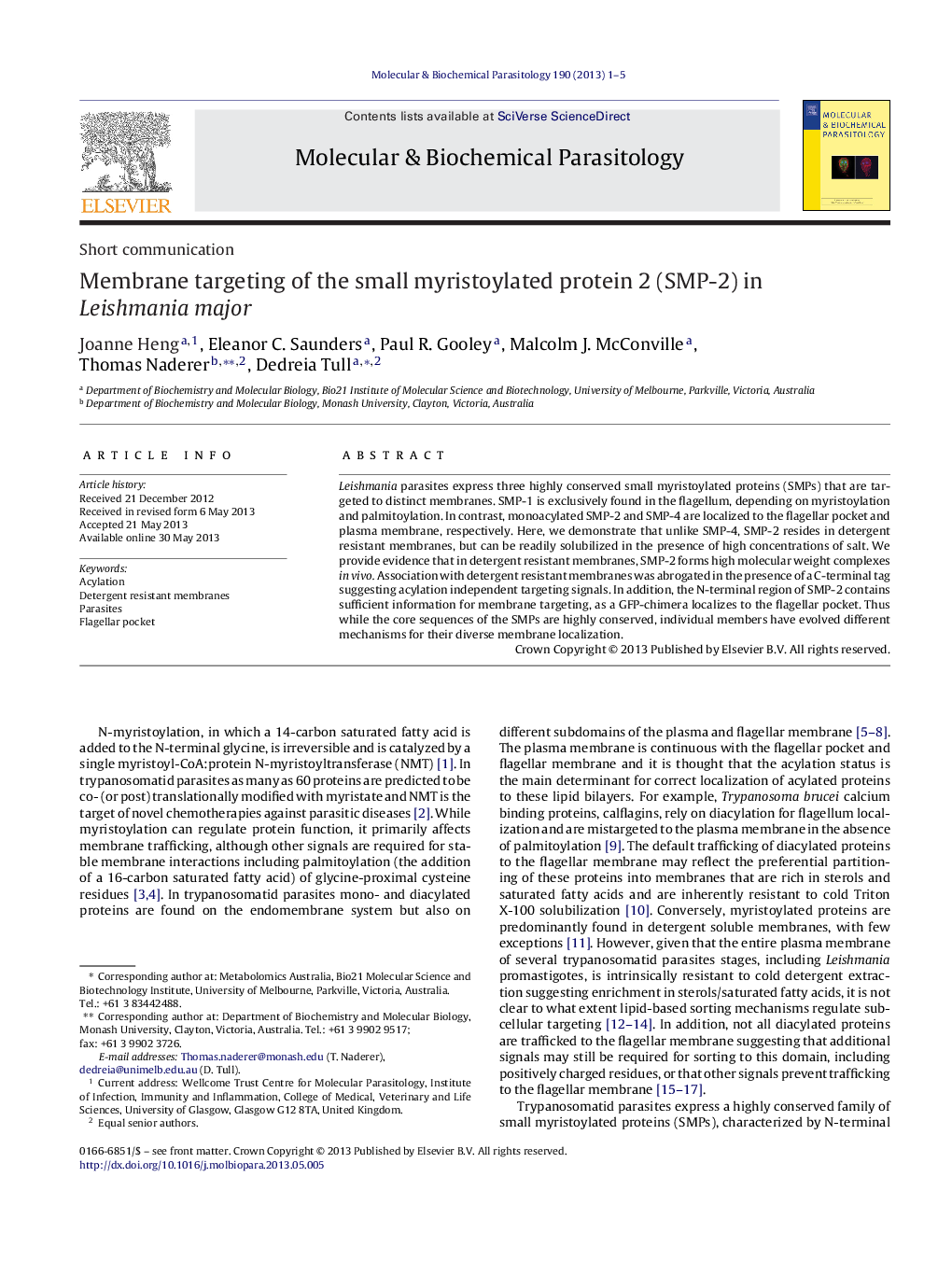| Article ID | Journal | Published Year | Pages | File Type |
|---|---|---|---|---|
| 5915486 | Molecular and Biochemical Parasitology | 2013 | 5 Pages |
â¢SMP-2 resides in detergent resistant membranes.â¢SMP-2 relies on ionic interactions for stable membrane interaction.â¢N-terminal region of SMP-2 is sufficient for flagellar pocket targeting.
Leishmania parasites express three highly conserved small myristoylated proteins (SMPs) that are targeted to distinct membranes. SMP-1 is exclusively found in the flagellum, depending on myristoylation and palmitoylation. In contrast, monoacylated SMP-2 and SMP-4 are localized to the flagellar pocket and plasma membrane, respectively. Here, we demonstrate that unlike SMP-4, SMP-2 resides in detergent resistant membranes, but can be readily solubilized in the presence of high concentrations of salt. We provide evidence that in detergent resistant membranes, SMP-2 forms high molecular weight complexes in vivo. Association with detergent resistant membranes was abrogated in the presence of a C-terminal tag suggesting acylation independent targeting signals. In addition, the N-terminal region of SMP-2 contains sufficient information for membrane targeting, as a GFP-chimera localizes to the flagellar pocket. Thus while the core sequences of the SMPs are highly conserved, individual members have evolved different mechanisms for their diverse membrane localization.
Graphical abstractDownload high-res image (107KB)Download full-size image
